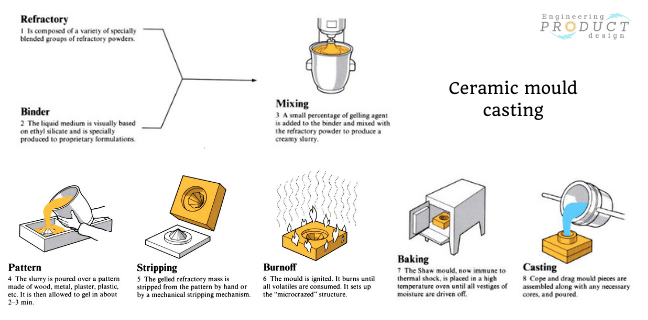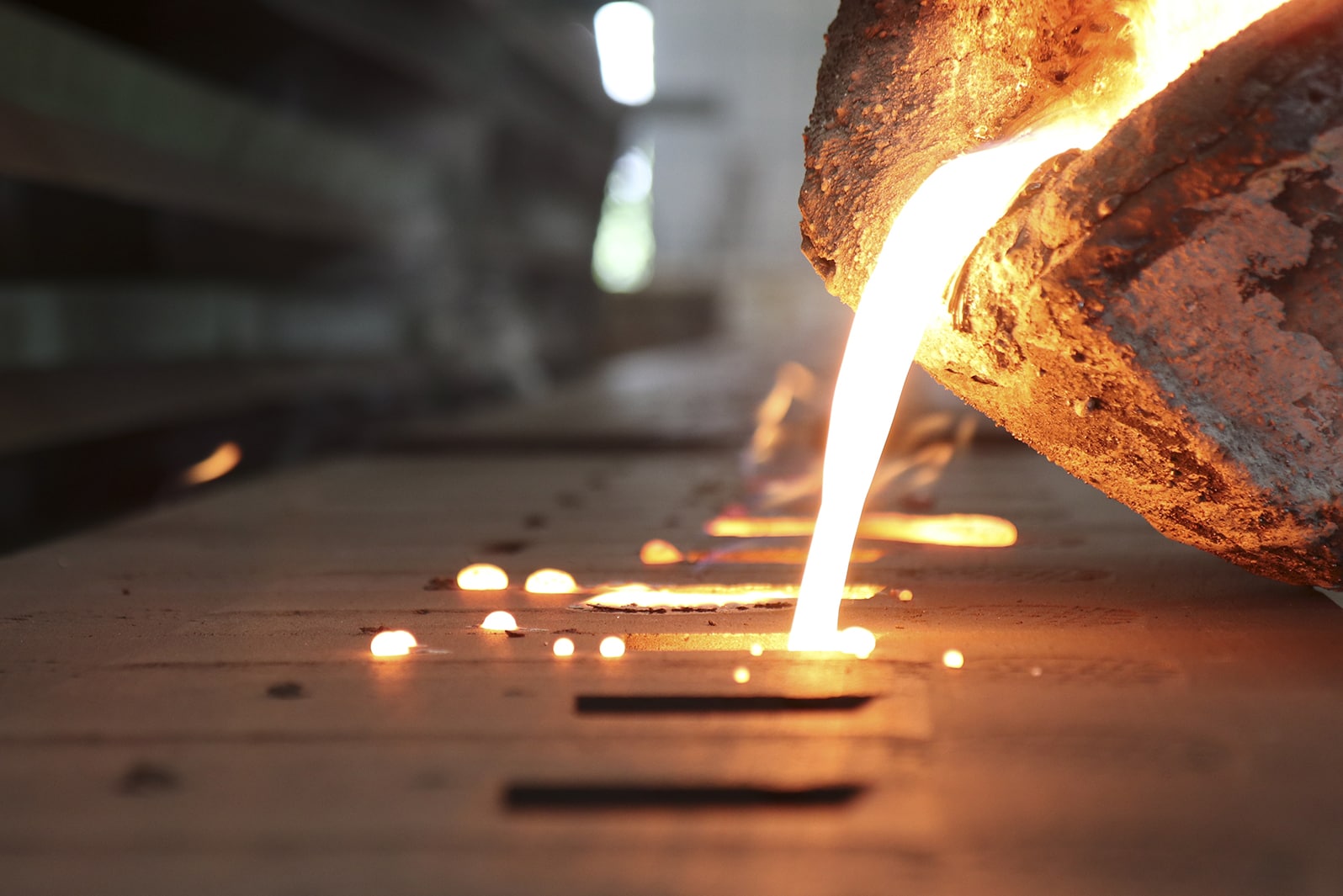How Aluminum Castings achieve precision through refined techniques
Recognizing the Steel Castings Process: A Comprehensive Overview for Beginners
The Metal Casting procedure is an essential technique in making that transforms molten steel right into solid kinds. Novices should realize the different approaches involved, such as sand spreading and pass away spreading. Comprehending the products, layout principles, and security procedures is just as important. Each facet plays a critical function in achieving successful outcomes. As one browses these complexities, the question of exactly how to optimize each action for improved outcomes becomes increasingly significant.
The Basics of Steel Casting
Although Metal Casting has actually developed over centuries, its basic concepts continue to be regular and indispensable to the manufacturing process. At its core, Metal Casting involves the makeover of molten steel right into solid items with various methods. The procedure starts with the production of a mold, which defines the shape of the end product. As soon as the mold is prepared, steel is heated to its melting point and put into the cavity. After cooling down, the metal strengthens, taking the form of the mold.
There are numerous casting techniques, consisting of sand casting, investment casting, and pass away spreading, each with one-of-a-kind advantages and applications. The option of method depends upon elements such as manufacturing quantity, product kind, and desired accuracy. Once cast, the final product may go through added procedures like machining or surface area treatment to accomplish the called for finish and specifications. Recognizing these essentials is crucial for any person curious about the area of Metal Casting.

Recognizing Products Used in Steel Casting
Materials play an important role in the Metal Casting procedure, influencing the end product's homes and efficiency. Different metals are utilized, including light weight aluminum, bronze, steel, and iron, each offering unique attributes fit for particular applications. Aluminum is light-weight and corrosion-resistant, making it perfect for vehicle components. Iron, specifically cast iron, is favored for its superb wear resistance and resilience. Steel provides high strength and convenience, usually utilized in heavy equipment parts. Bronze, recognized for its deterioration resistance and machinability, is commonly used in marine applications.
Along with the steels, different casting products, such as sand, plaster, and ceramic, are made use of to create molds. Sand casting, the most common method, makes use of silica sand due to its thermal stability and ability to form complex shapes. Plaster and ceramic mold and mildews provide better details yet may need even more intricate procedures. The choice of materials directly impacts the performance, price, and quality of the spreading procedure.
The Style Process: From Concept to Blueprint
The style process in Metal Casting starts with the first principle advancement, where ideas are generated and evaluated. This is followed by the application of CAD modeling strategies, permitting for accurate visualizations of the layout. Lastly, the plan finalization steps ensure that all specs are precisely recorded for manufacturing.
Preliminary Idea Growth
Preliminary principle development marks a vital stage in the Metal Casting procedure, where ideas change right into tangible layouts. During this stage, developers collaborate with stakeholders and engineers to brainstorm and improve first ideas. They consider variables such as functionality, aesthetics, and manufacturability, making certain that the style fulfills the required specs and performance standards. Sketches and harsh drafts are produced to visualize the principles, enabling for preliminary analyses of feasibility and cost-effectiveness. This phase additionally involves determining products and potential casting techniques that line up with the layout objectives. Eventually, preliminary concept growth lays the foundation for a detailed plan, leading the subsequent phases of the spreading process and making sure an effective shift from concept to reality.
CAD Modeling Techniques
Transforming ideas into precise styles, CAD modeling strategies play a pivotal duty in the Metal Casting procedure. These strategies utilize innovative software program to produce comprehensive three-dimensional designs that properly show the intended product. By employing devices such as parametric modeling, strong modeling, and surface area modeling, developers can control dimensions and shapes with convenience. CAD systems additionally facilitate simulation and analysis, permitting the recognition of prospective defects before production begins. This proactive method decreases material waste and enhances the style for manufacturability. Additionally, CAD models can be conveniently changed, enabling fast versions based upon responses. Essentially, CAD modeling acts as the backbone of the design procedure, connecting the space between first concepts and the eventual production-ready designs.
Plan Finalization Steps
Complying with the development of in-depth CAD versions, the next stage entails plan completion, which is important in translating digital designs right into actionable prepare for production. This procedure starts with reviewing the CAD models for accuracy and conformity with requirements. Once confirmed, the dimensions, tolerances, and material requirements are carefully outlined to guarantee clarity. Including notes and comments helps communicate crucial info concerning casting processes, surface coatings, and assembly demands. The completed plan goes through an extensive approval procedure, commonly involving partnership with designers and production teams to attend to any prospective concerns. Nevertheless modifications are made and authorizations acquired, the blueprint is officially launched, acting as the fundamental file for the succeeding phases of Metal Casting, including pattern making and mold layout.
The Metal Casting Techniques Discussed

Metal Casting strategies incorporate a range of methods used to shape molten steel right into preferred forms. These techniques differ according to the kind of product, complexity of the style, and manufacturing quantity. Sand casting is one of one of the most common approaches, entailing the development of a mold and mildew from sand to hold the liquified steel. Investment spreading, or lost-wax spreading, permits for elaborate designs by utilizing a wax pattern that is dissolved. Die casting uses high-pressure injection of molten steel right into a mold and mildew, suitable for automation. Other approaches consist of permanent mold and mildew casting, which uses multiple-use mold and mildews, and centrifugal casting, where rotational forces aid in filling the mold and mildew. Each method has its applications and benefits, making it essential for manufacturers to select the proper technique based on their specific demands and requirements. Recognizing these strategies is essential for anybody involved in the Metal Casting procedure.
Ending Up Processes: Enhancing Your Casted Product

Finishing procedures play a vital duty in boosting the top quality and appearance of casted products. Various surface area treatment strategies, such as polishing and covering, are employed to boost longevity and looks. Additionally, quality examination methods ensure link that the last item meets defined criteria and performance demands.
Surface Therapy Techniques
A range of surface area therapy techniques play an important duty in improving the top quality and durability of casted items. These strategies consist of techniques such as shot blasting, polishing, and finish. Shot blasting effectively gets rid of surface area imperfections, improving the useful and visual attributes of the casting. Sprucing up gives a smooth finish, which is particularly crucial for decorative applications and elements requiring marginal rubbing. Layer strategies, such as electroplating or powder finish, offer extra defense versus corrosion and wear, making certain resilience. Moreover, surface therapies can improve bond for find this succeeding procedures, such as paint or bonding. By using these techniques, suppliers can accomplish exceptional surface area high quality, which is essential for the efficiency and life expectancy of Metal Casting in various applications.
Quality Evaluation Methods
Effective quality inspection methods are vital for assuring the honesty and efficiency of casted products after the ending up processes. Different methods are used to assess the high quality of Metal Casting, including aesthetic inspection, dimensional checks, and non-destructive screening (NDT) Visual inspection enables for the recognition of surface problems, while dimensional checks ensure that items meet specified tolerances. NDT approaches, such as ultrasonic screening and radiographic assessment, offer much deeper insights into interior integrity without damaging the castings. Additionally, mechanical screening, such as tensile and firmness examinations, evaluates material homes - Aluminum Foundry. By using a mix of these methods, manufacturers can enhance product top quality and reliability, eventually causing better client satisfaction and minimized production prices
Security Considerations in Metal Casting
While the Metal Casting procedure look here provides countless advantages, it also offers a series of safety and security risks that need to be carefully managed. Workers in casting facilities are subjected to high temperatures, liquified steels, and hazardous materials, which can lead to extreme injuries if correct safety measures are not taken. Individual protective devices (PPE) such as heat-resistant gloves, face guards, and protective garments is vital to lessen risks.
Furthermore, the visibility of fumes and dirt demands correct ventilation systems to guarantee air top quality - Aluminum Castings. Normal training on safety and security protocols is vital for all employees to identify prospective hazards and react properly. Emergency treatments need to be established, consisting of fire safety and security measures and emergency treatment availability. Upkeep of tools and appropriate handling of products even more add to a more secure working atmosphere. By prioritizing these safety and security factors to consider, Metal Casting operations can protect their labor force and preserve effective manufacturing processes
Often Asked Inquiries
What Are the Environmental Impacts of Metal Casting?
Metal Casting can lead to ecological influences such as air and water air pollution, resource depletion, and power intake. In addition, incorrect waste management and discharges from shops add to eco-friendly disruptions and wellness risks for nearby communities.
Exactly how Do I Choose the Right Metal for Spreading?
To pick the ideal metal for spreading, one must consider variables such as mechanical residential properties, deterioration resistance, thermal conductivity, and cost. Examining the desired application and environmental problems is important for ideal choice.
What Are the Common Flaws in Metal Casting?
Usual flaws in Metal Casting include porosity, shrinking, sand addition, and misruns. These problems commonly develop from inappropriate product selection, inadequate style, or imperfections in the spreading process, affecting the end product's quality and efficiency.
How Can I Enhance My Metal Casting Abilities?
To improve Metal Casting abilities, one ought to exercise regularly, research study spreading techniques, examine previous projects for issues, look for feedback from seasoned wheels, and continuously experiment with different products and techniques to improve efficiency and understanding.
What Is the Expense of Beginning a Steel Spreading Organization?
Beginning a steel spreading service typically calls for a first investment of $5,000 to $50,000, relying on tools, materials, and center expenses. Variables like location and scale can considerably influence overall startup expenses.
The Metal Casting procedure is a basic method in producing that changes molten steel into strong types. Beginners must grasp the different approaches involved, such as sand spreading and pass away spreading. There are several casting methods, consisting of sand spreading, investment spreading, and pass away spreading, each with distinct benefits and applications. Investment casting, or lost-wax casting, allows for complex layouts by making use of a wax pattern that is melted away. Various other techniques include irreversible mold and mildew spreading, which makes use of multiple-use molds, and centrifugal spreading, where rotational forces help in loading the mold and mildew.